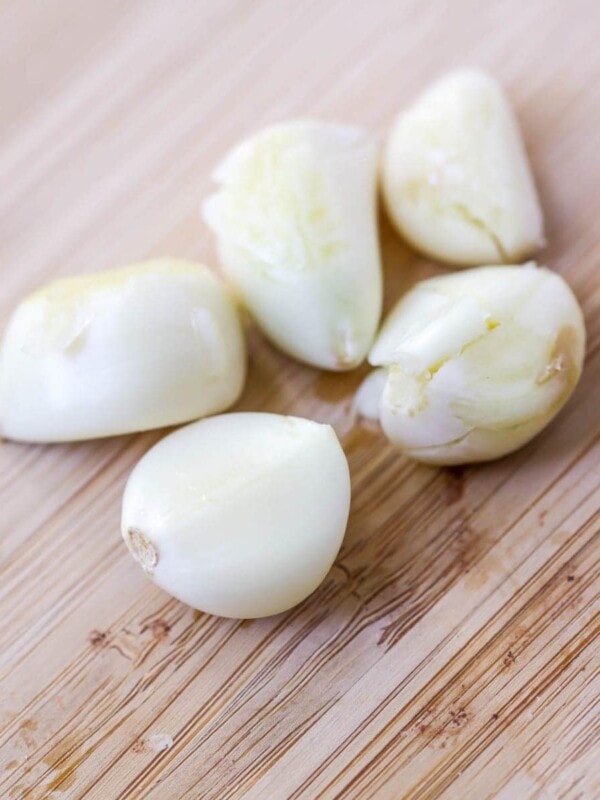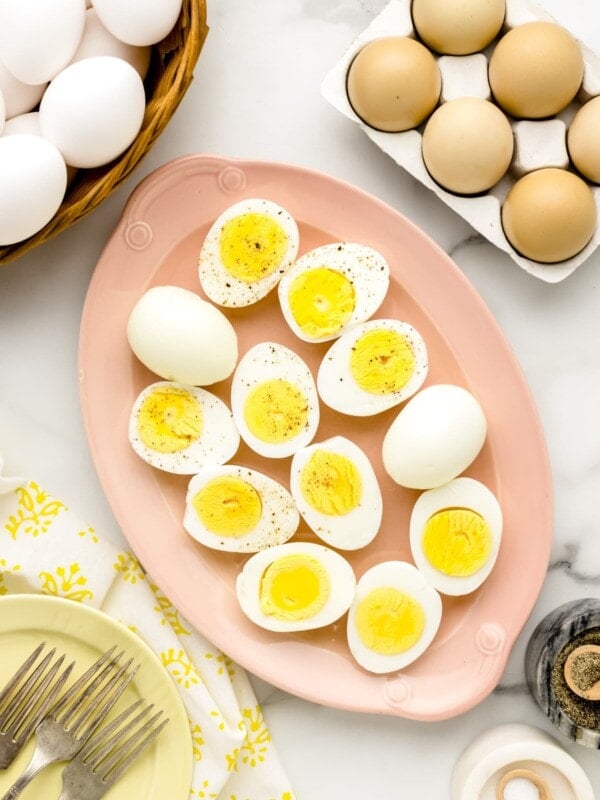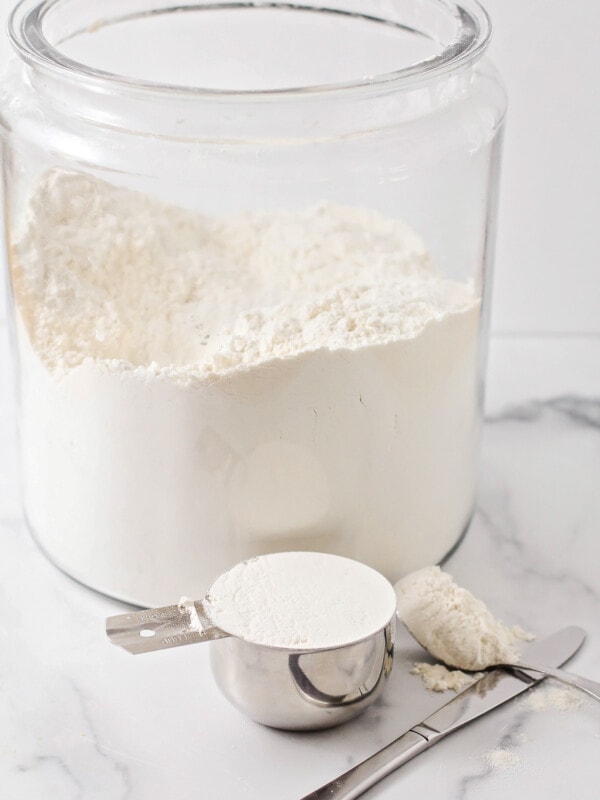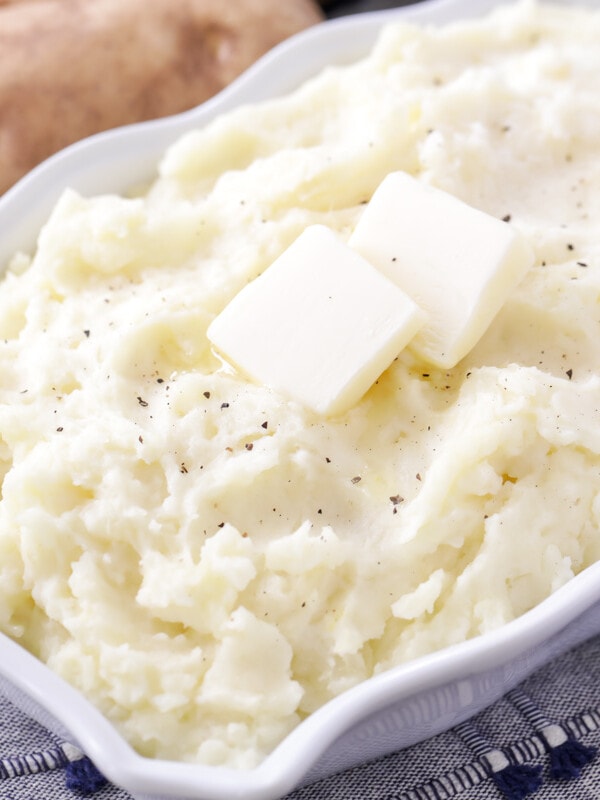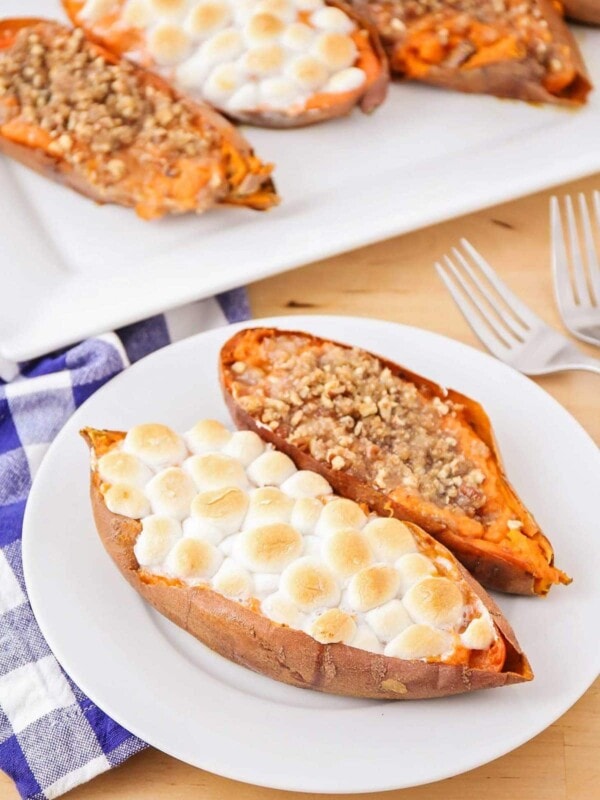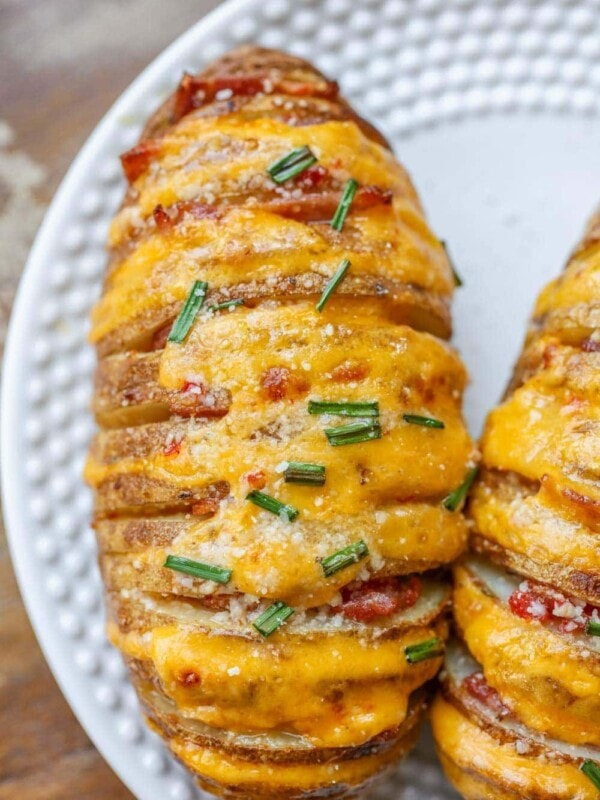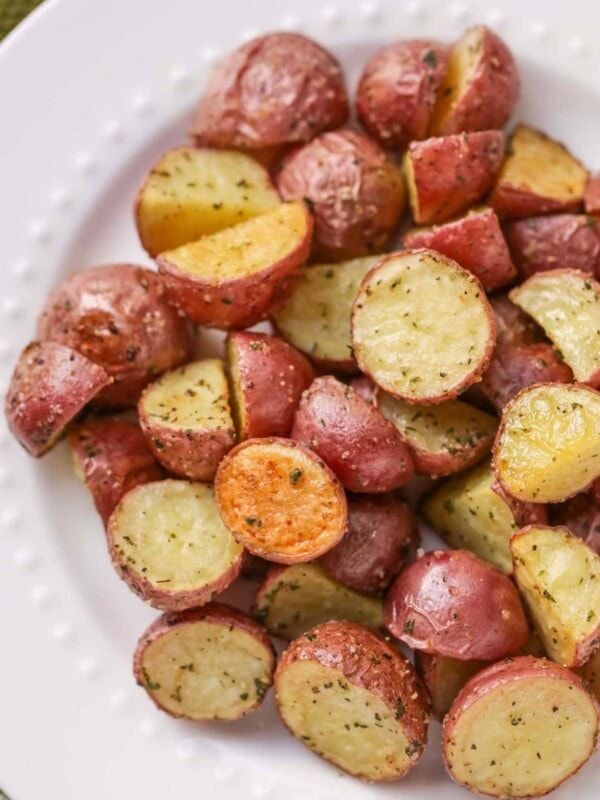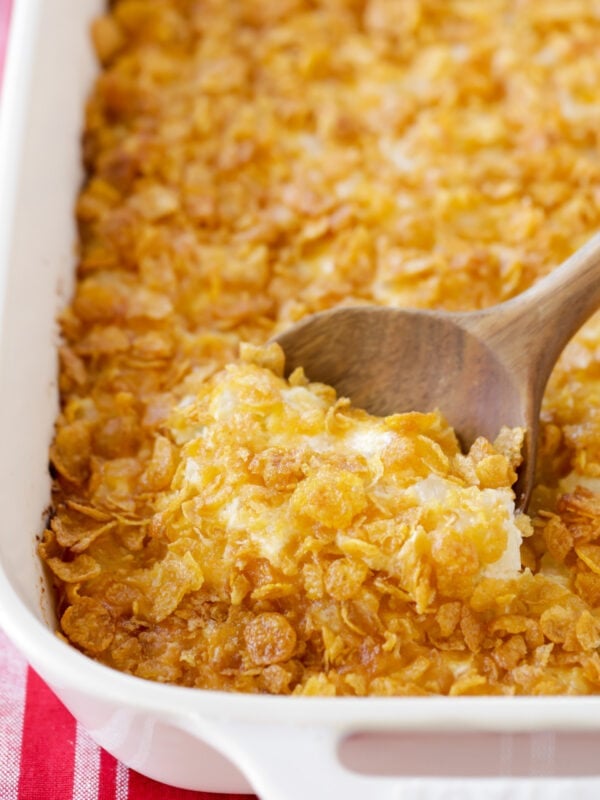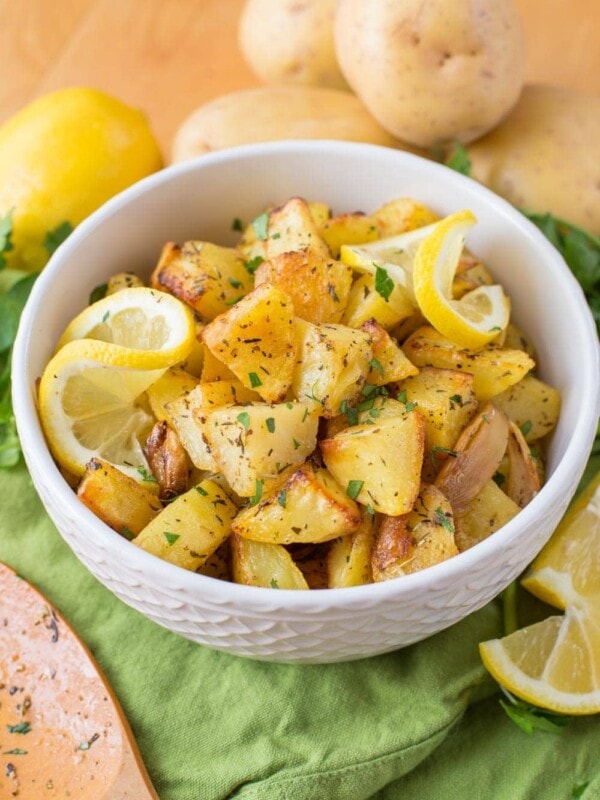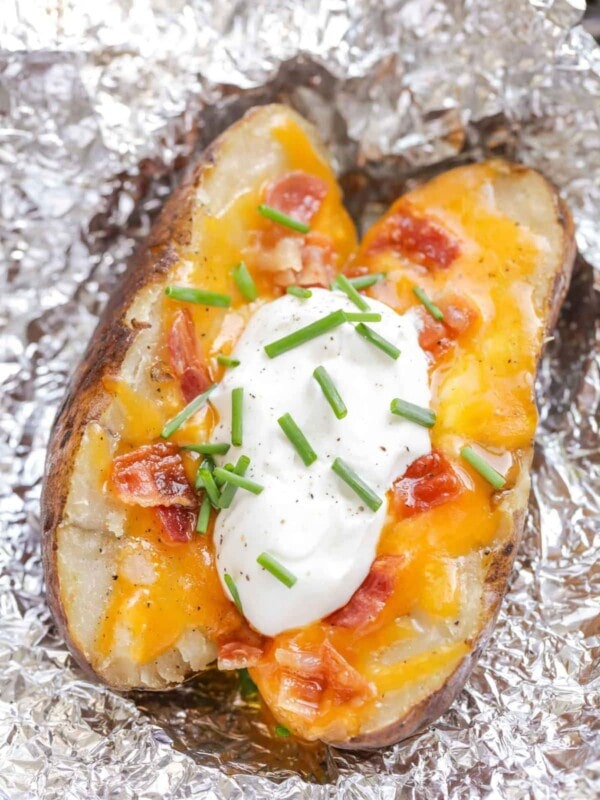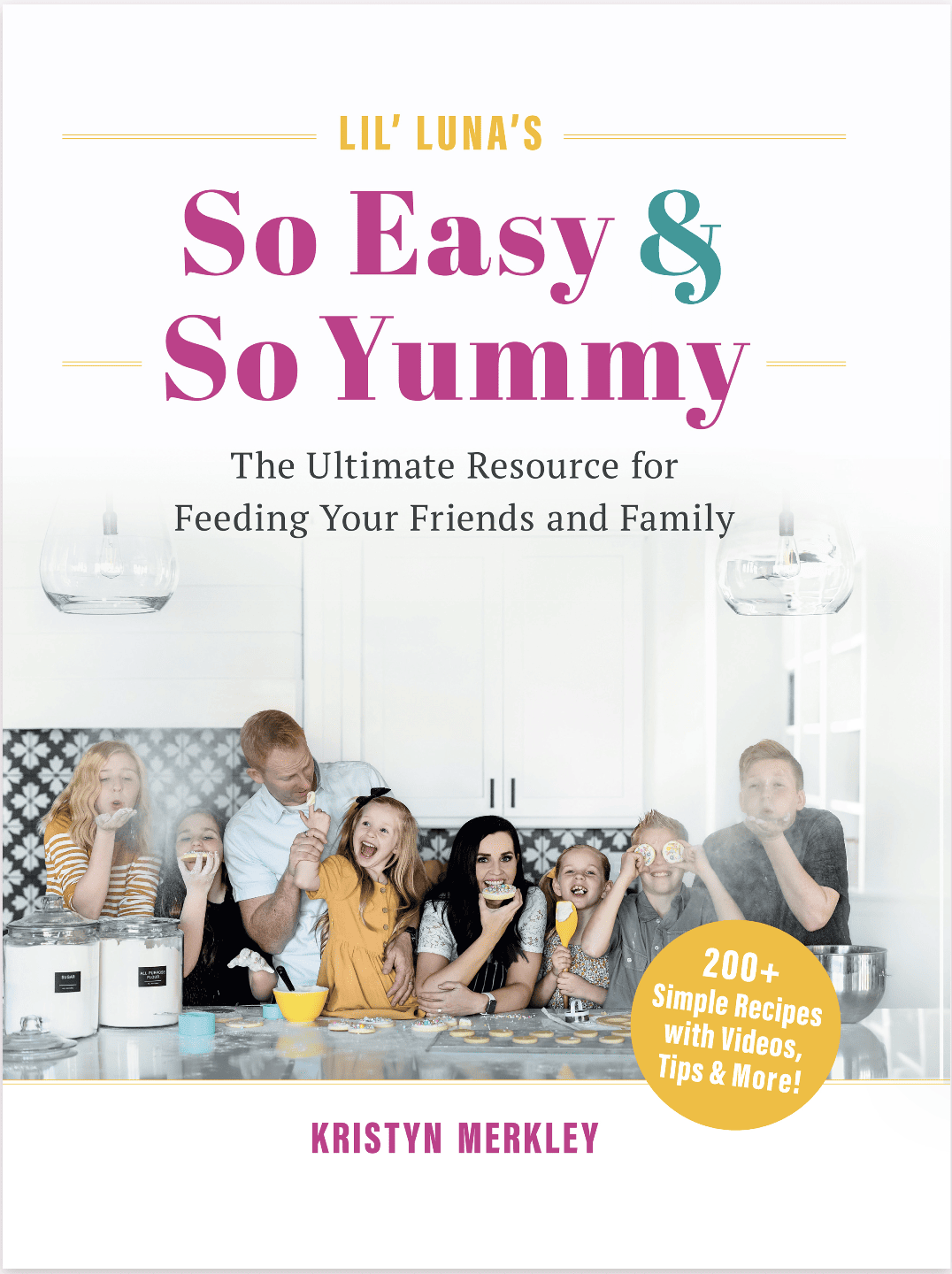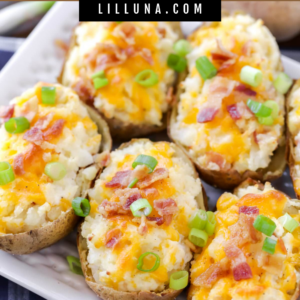This post may contain affiliate links. Please read our disclosure policy.
Potato, Potahto! Here’s types of potatoes and when to use them. Never guess again— find out which potato is perfect for your dish!
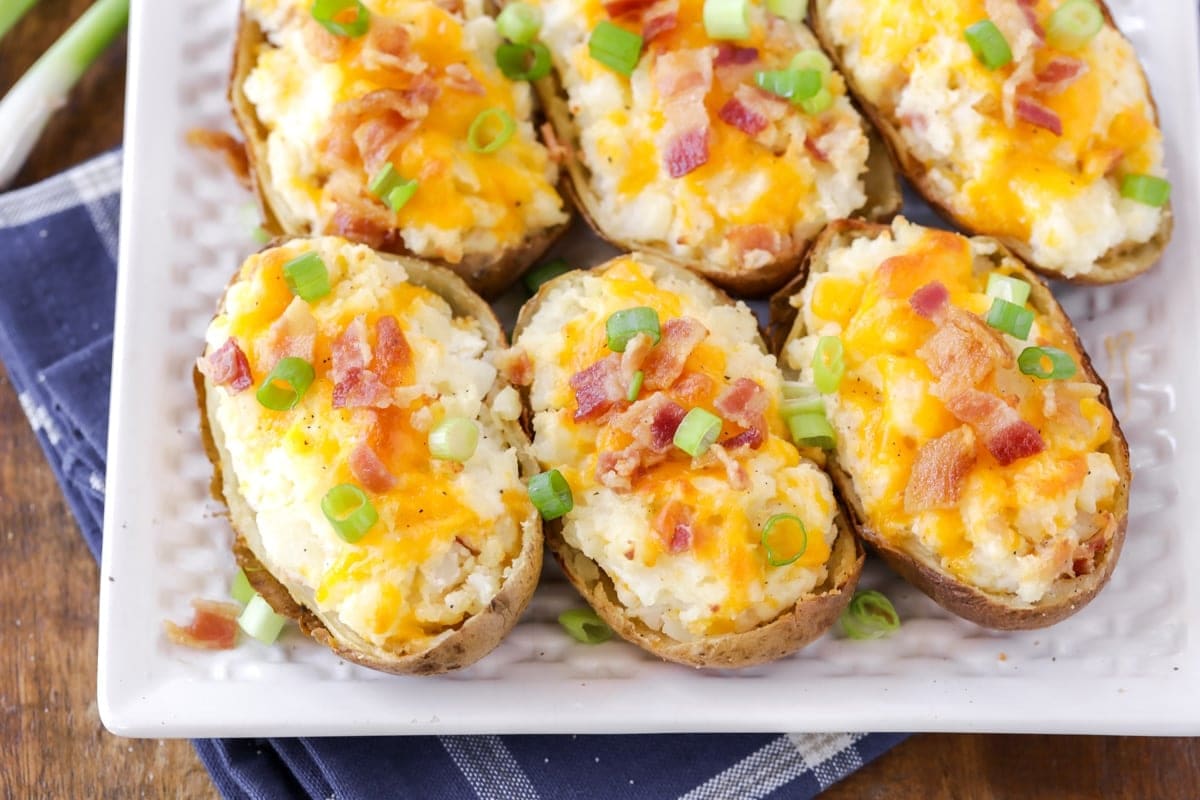
Who Doesn’t Love Potatoes?
We love potatoes and welcome ALL types and forms! Honestly, we love potatoes so much, we think they should be their own food group, are we right?! Potatoes are incredibly versatile, and we’ve got all the potato recipes! They shine as an appetizer with Potato Skins, a side dish with Potato Salad, a breakfast favorite with Cheesy Hashbrown Casserole, and even a hearty main dish with Cheesy Potato Soup. They do it all!
Potatoes come in so many varieties and can be used in nearly any dish, which can make it tricky to know which type is best for each recipe and how to cook them perfectly. Whether you’re baking, boiling, mashing, or frying, we’re here to break down the most common types of potatoes and show you the best ways to cook them for perfect results every time.
Why We Love Potatoes:
- Versatility. There are so many potato varieties! They can be prepared in countless ways, from Mashed Potatoes and Herb Roasted Potatoes to French Fries and potato salad. There’s a potato dish for every occasion.
- Budget-Friendly. Potatoes are a relatively inexpensive food, making them a great option for those on a budget. They can be a filling and satisfying meal without breaking the bank.
- Popular Choice. Potatoes are a popular food enjoyed by people of all ages and cultures. They’re a classic choice that’s always a crowd-pleaser.
Table of Contents
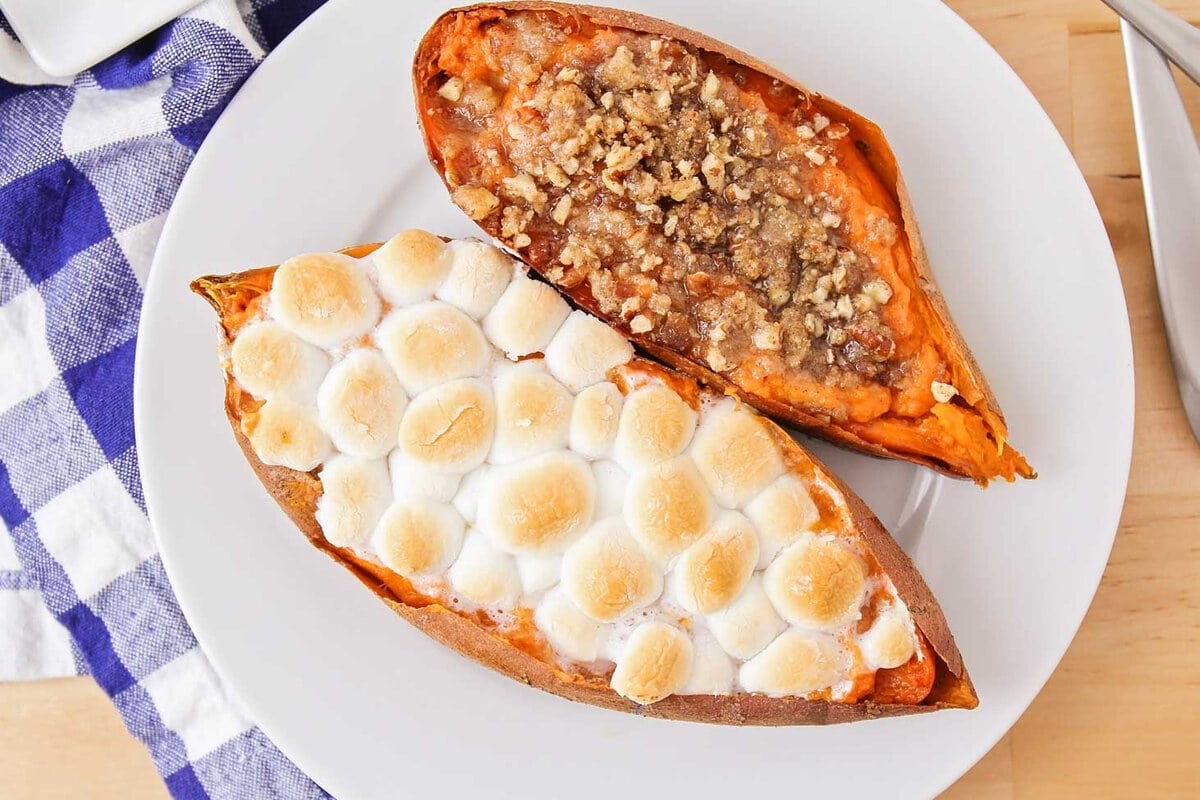
Potato Classifications
Did you know potatoes were fancy enough to have classifications!? It’s true, these root vegetables are commonly classified into three main categories based on their starch content and texture. Let’s dive into the classifications.
Starchy Potatoes
- Characteristics: High starch content and low in moisture, resulting in a dry, fluffy texture when cooked. These potatoes have a rough, thick skin.
- Best For: Baking, mashing, and frying.
Waxy Potatoes
- Characteristics: Low in starch, high moisture content, firm and creamy texture when cooked.
- Best For: Roasting, boiling, salads.
All Purpose Potatoes
- Characteristics: Medium starch content, versatile texture, medium moisture.
- Best For: Boiling, baking, roasting, mashing.
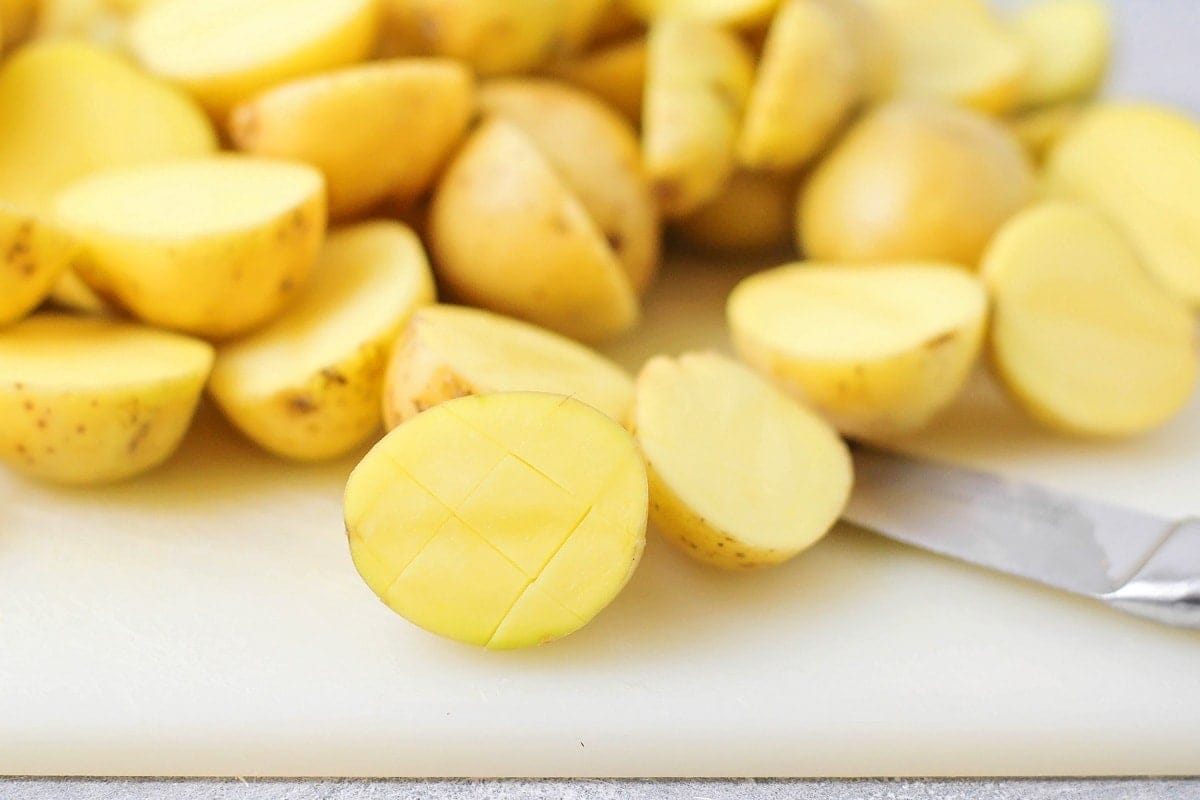
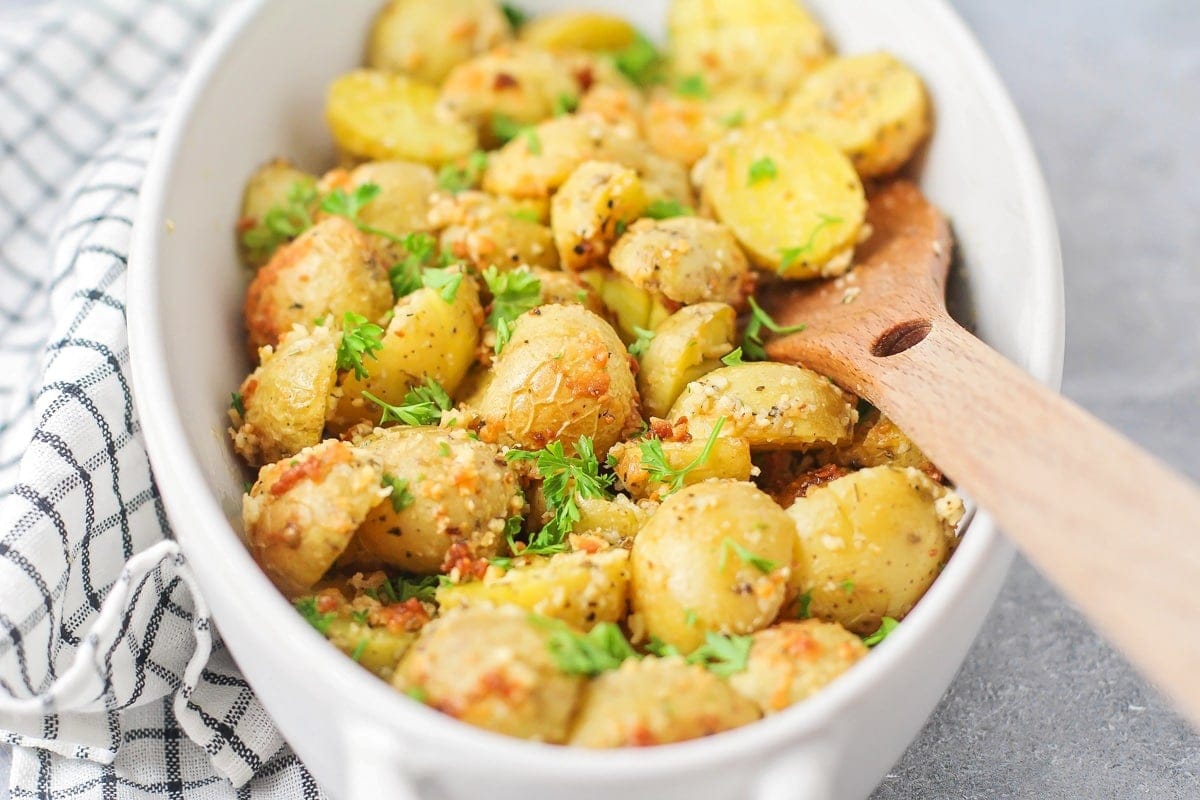
Types of Potatoes
There are many different types of potatoes, each with its own unique flavor, texture, and best use. These are some of our favorite types to use!
Russet Potatoes
These are some of the most common potatoes that you find at your local grocery store. They are typically large in size and have rough brown skin and white flesh that is high in starch and low in moisture, making them classified as starchy. They have a fluffy texture when cooked making them ideal for baking, frying, pan-frying, and mashing. Russet potatoes are commonly used for Baked Potatoes and Hashbrowns.
Yukon Gold Potatoes
One type of yellow potatoes, these are medium-sized with smooth, golden skin and yellow flesh. Known for their creamy texture and buttery flavor, they are categorized as all-purpose. Because they are all purpose you can use various cooking methods, including roasting, boiling, and mashing!
Red Potatoes
Red potatoes are generally small and medium-sized. They have red skin (hence the name!) and white flesh. Classified as waxy, these potatoes are best used for boiling and roasting like our widely popular Parmesan Potatoes.
Fingerling Potatoes
These potatoes get their name because they are small and oblong in shape. They have thin skin and come in all kinds of different colors. Fingerling potatoes are classified as waxy and are best for roasting, boiling, and sauteing. Try them in our Asparagus and Potatoes Medley!
New potatoes
These are petite potatoes with a thin skin and a sweet flavor and soft texture. Since they’re classified as waxy, they’re great for boiling, roasting, and tossing in salads.
Purple Potatoes
Known for their dark purple skin and purple flesh, these potatoes are classified as all purpose and are great for roasting, baking, and mashing.
Sweet Potatoes
Sweet potatoes have smooth skin that can be light brown or orange, and their flesh is sweet. Since they’re classified as starchy, they’re perfect for baking, roasting, mashing, and frying. Let’s be honest—who doesn’t love the crispness of Sweet Potato Fries or sweet potatoes topped with marshmallows at Thanksgiving!?
White Potatoes
White potatoes have smooth, light tan skin and white flesh and are classified as all purpose. They’re super versatile and great for boiling, baking, roasting, and mashing. These potatoes are great for fresh potato salads and stews.
Kennebec Potatoes
These potatoes are medium to large with smooth, light tan skin and white flesh. These spuds are great for baking, frying, or making chips, thanks to their ability to get nice and crispy. You’ll often see them as fries, crunchy potato chips, or a baked potato. If you’re looking to add some crispiness to your meal, these are perfect!
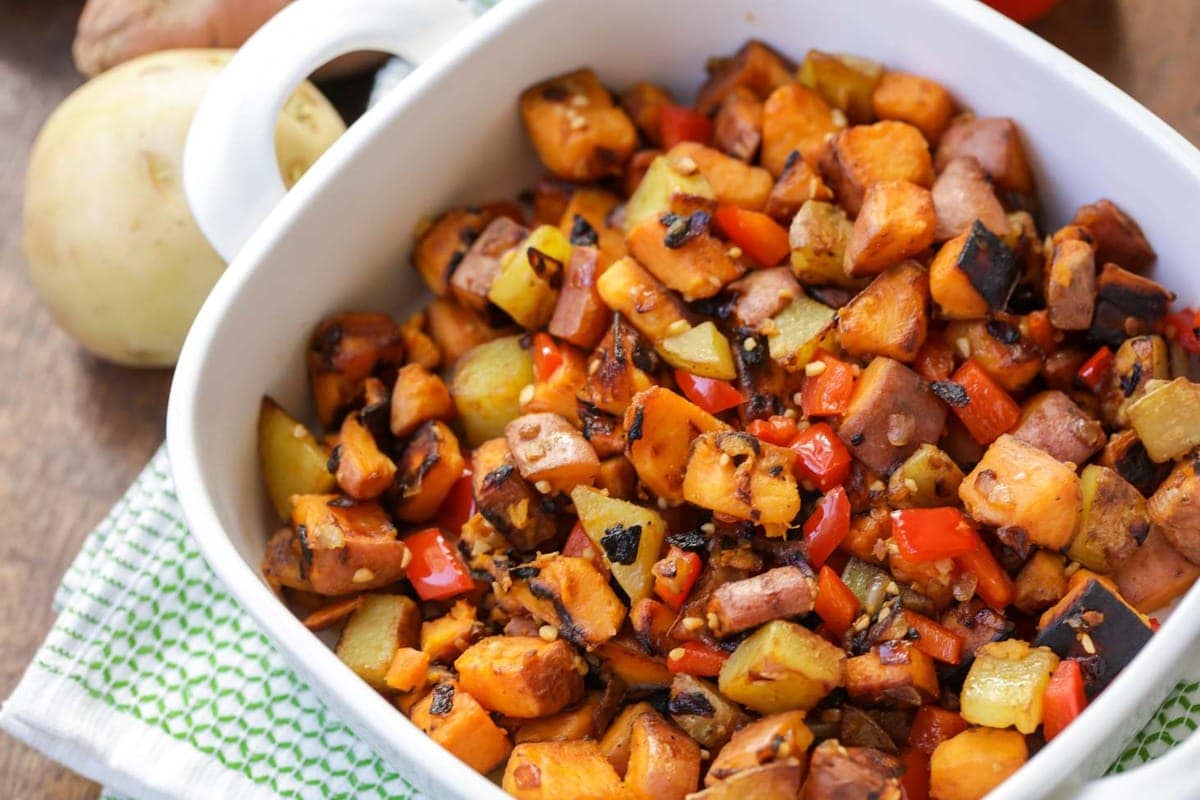
Time to Make Some Potatoes!
There you have it! Now you know about different types of potatoes and when to use them. Each type has its own special qualities that make it perfect for different dishes. Whether you’re craving the fluffy goodness of Russets, the creamy richness of Yukon Golds, or the sweet delight of Sweet Potatoes, there’s a potato for every occasion. From salads to fries to hearty soups, these spuds are here to make your meals delicious and satisfying. So next time you’re cooking, have fun experimenting with different types and enjoy the endless possibilities they bring to your plate!
More Like This
Kitchen Tips
Potato recipes
Even More Potato Recipes
FAQs
Potatoes should be kept in a cool, dark place with good ventilation, like a pantry or a cupboard. Avoid storing them in the fridge, as the cold can convert their starch into sugar and affect their taste and texture.
Yes, you can eat potatoes that have sprouted, but you should remove the sprouts and any green parts before cooking. The sprouts and green areas can contain solanine, a natural toxin that can be harmful in large amounts.
A potato is bad if it has an unpleasant odor, a soft or mushy texture, or visible mold.
